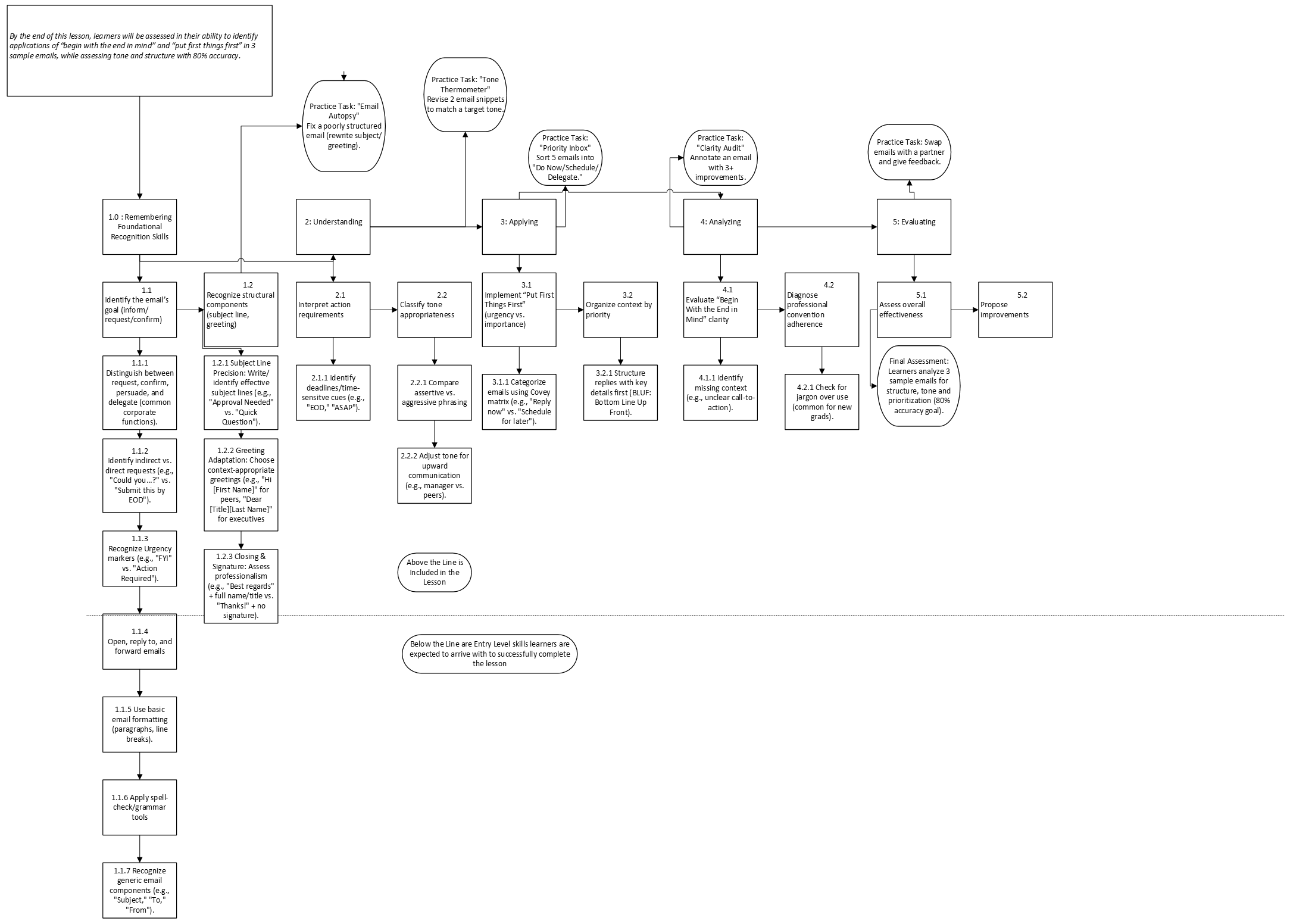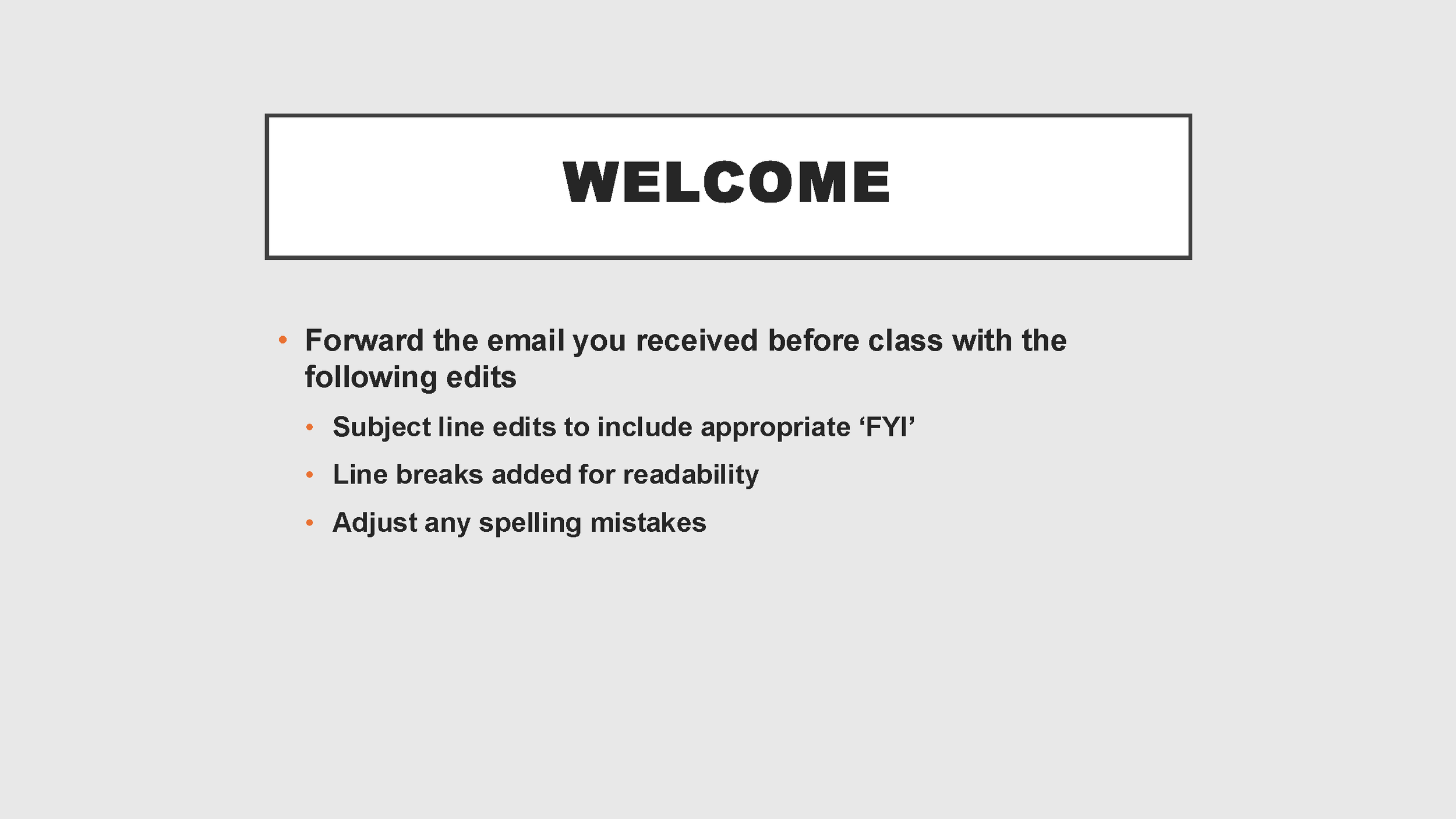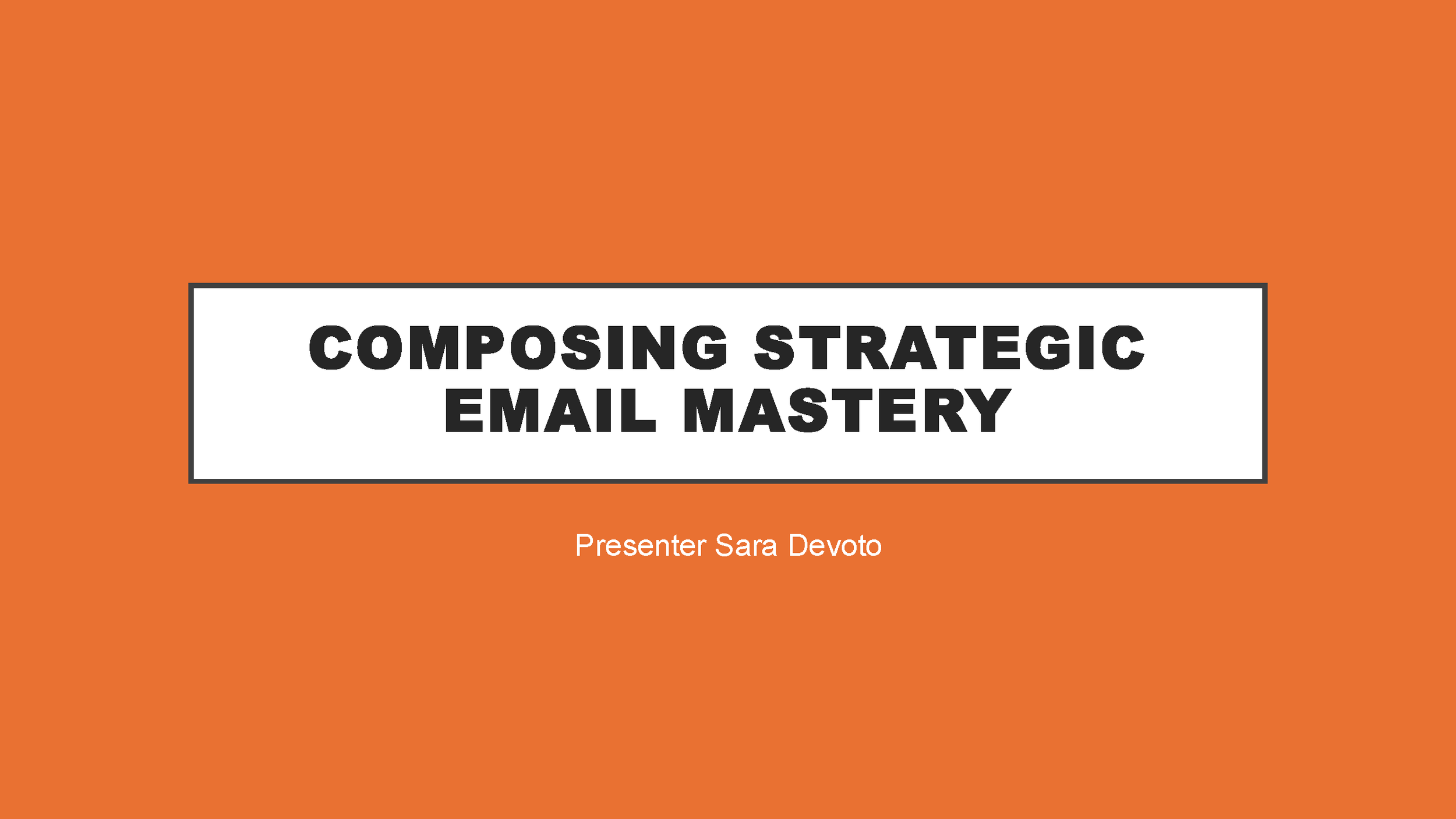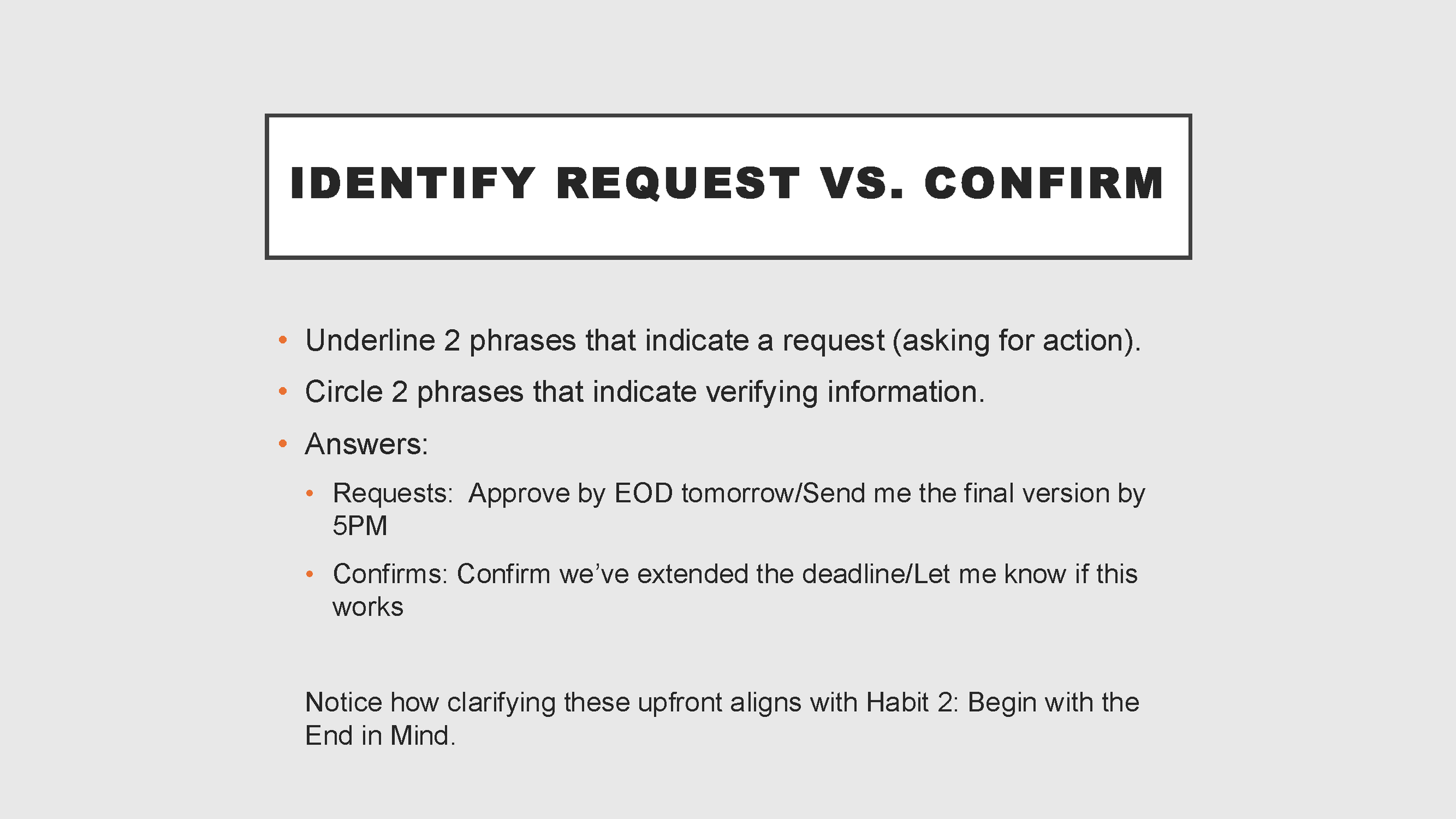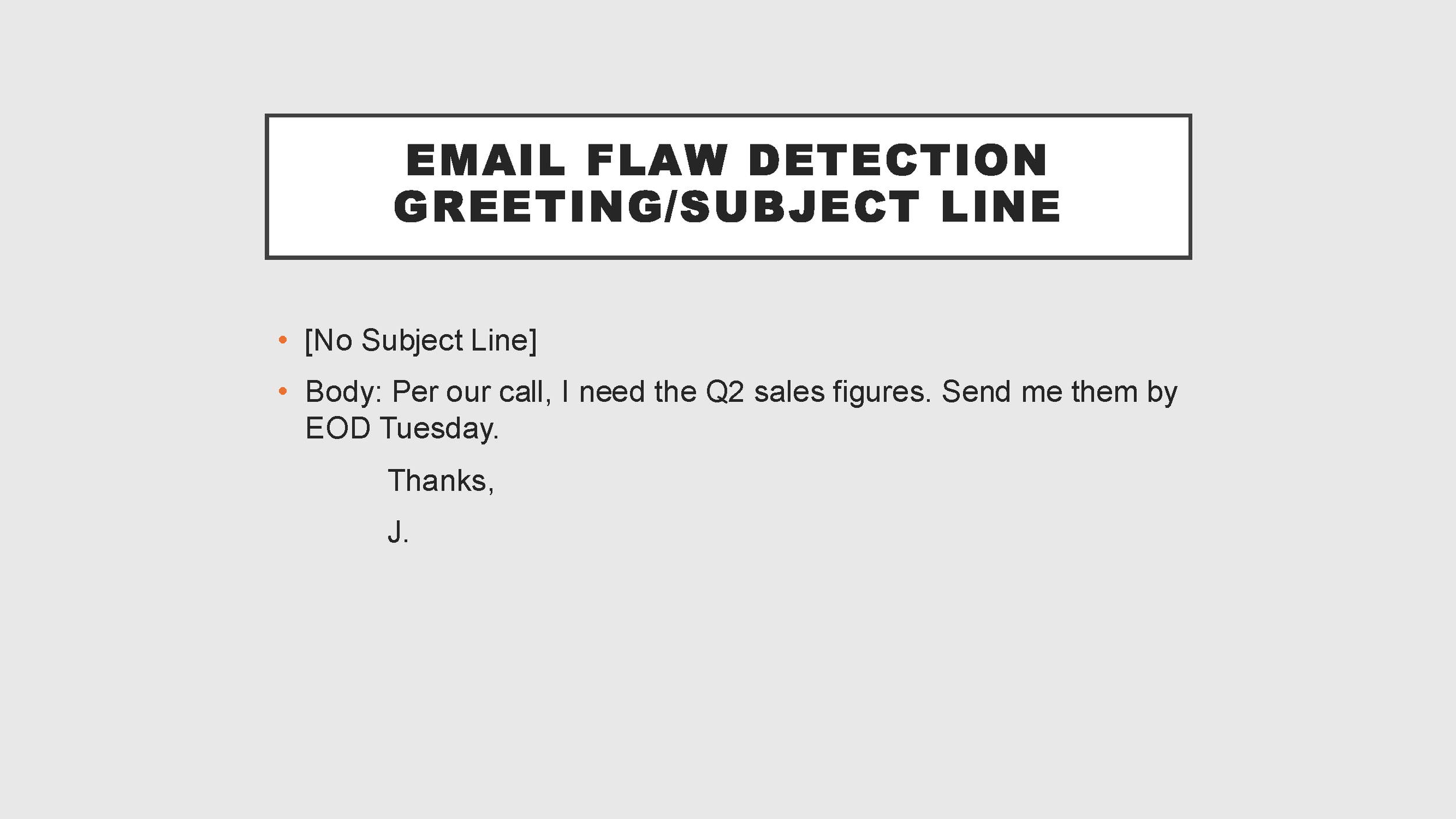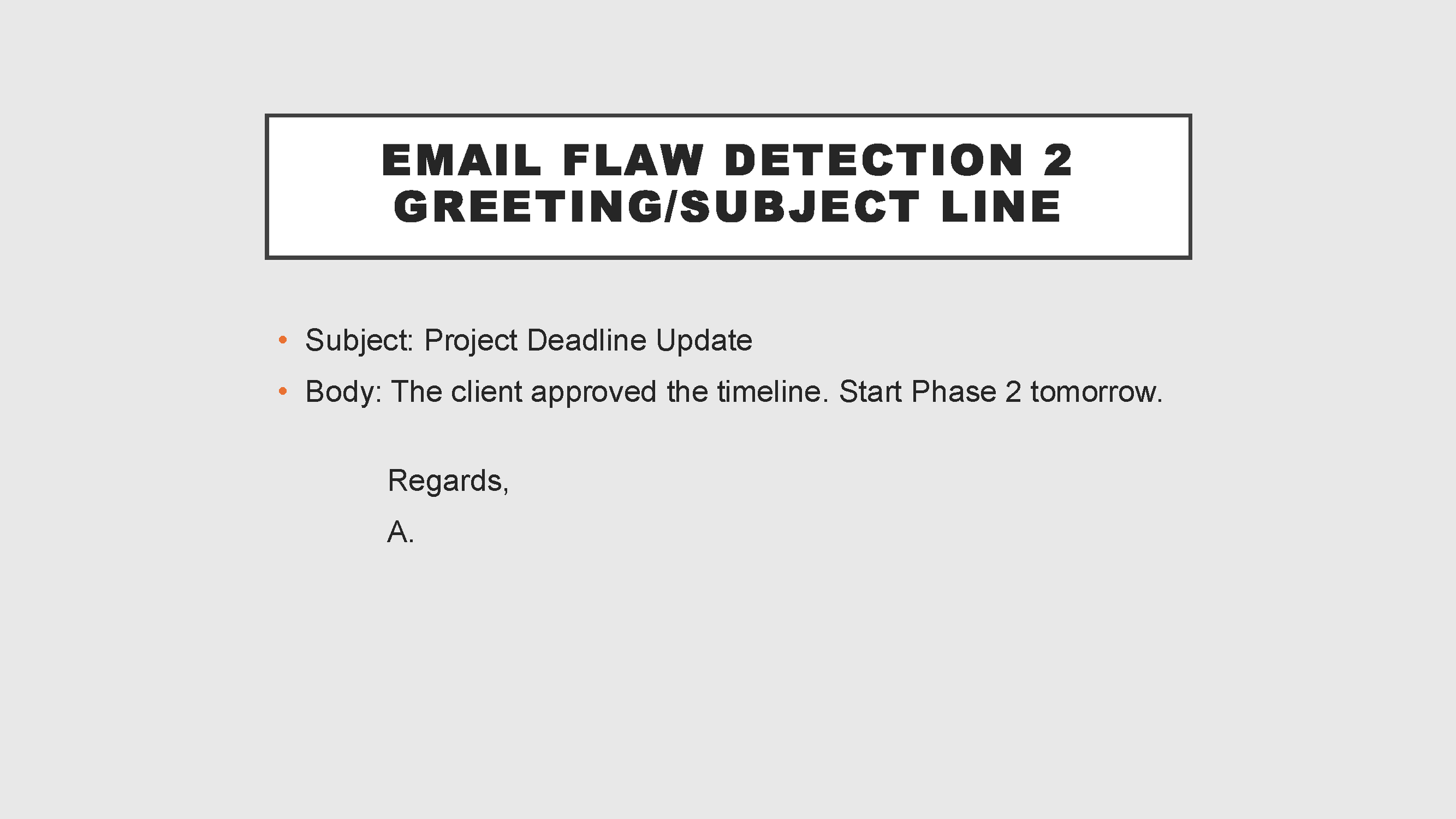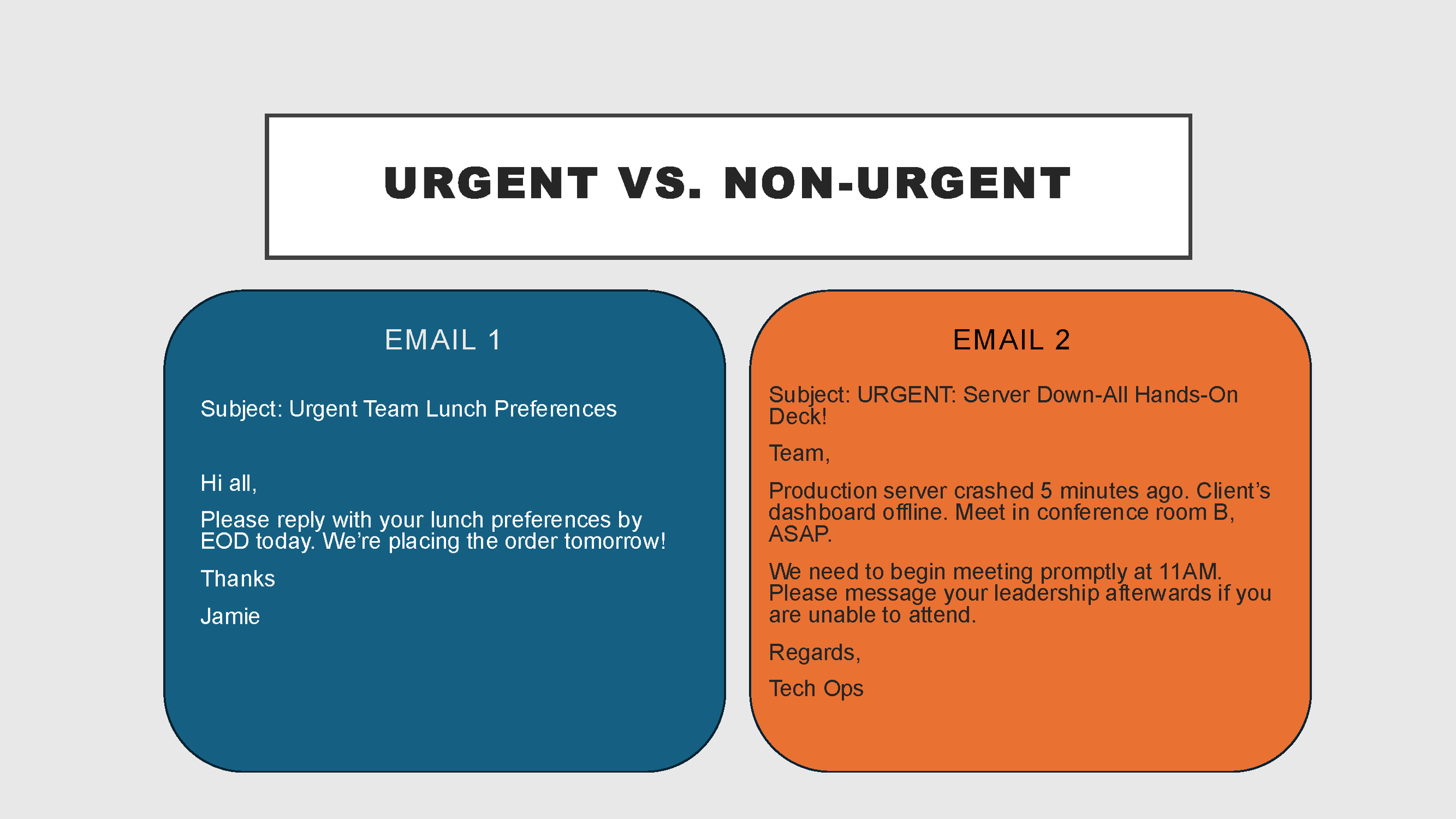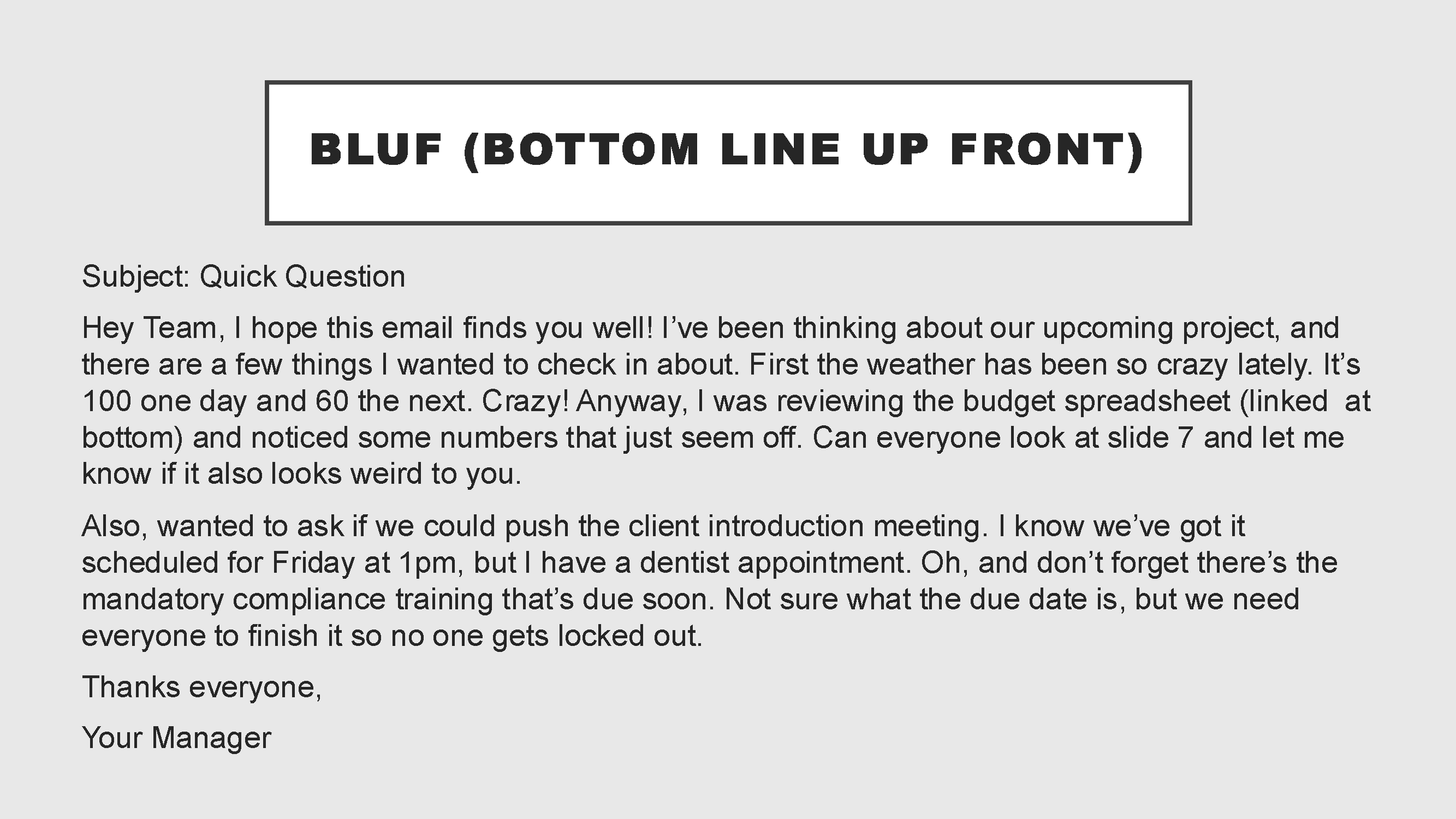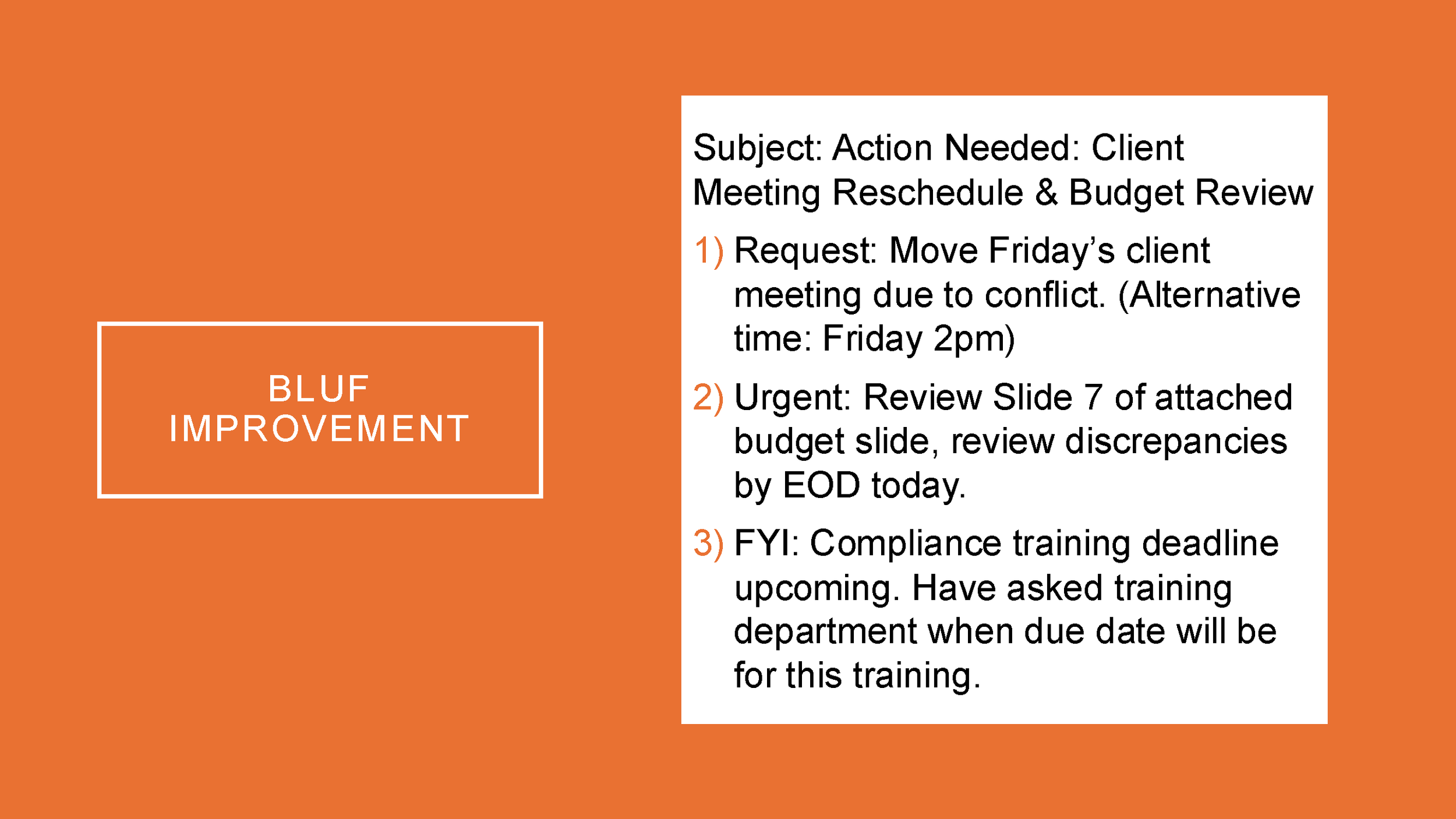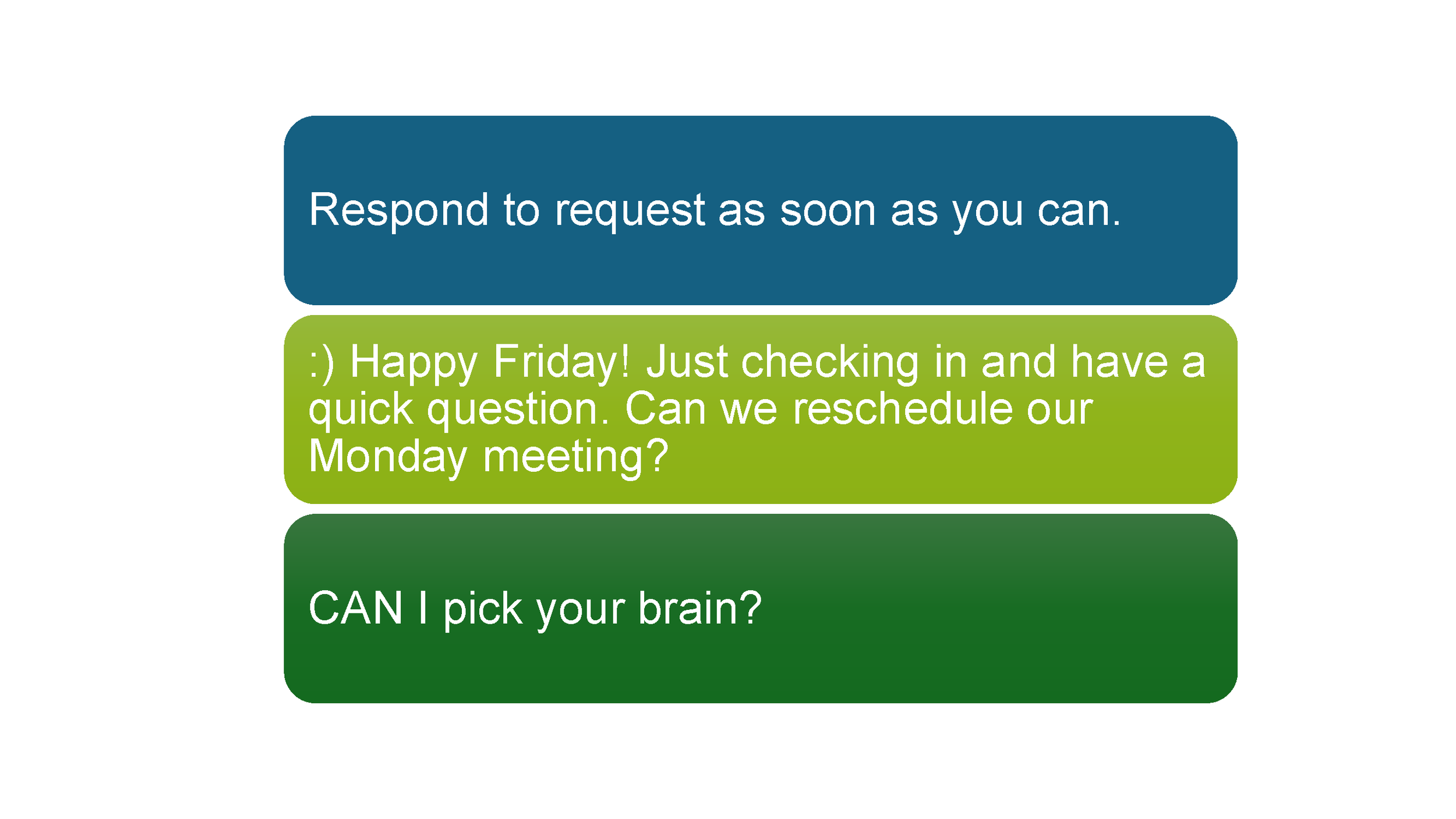Composing Strategic Emails Using the 7 Habits of Highly Effective People
Background:
This concept project was developed as a part of my Master’s in Instructional Design and Technology for Introduction to Instructional Design. The assignment was to pick a topic of interest to us that could also be used in several different work settings. This was an easy choice for me as training with the 7 Habits has always left me understanding more about myself. I knew this topic would have a broad reach, and strategic email communication is critical to learn early in one’s career.
Goal Statement:
By the end of this lesson, learners will be assessed in their ability to identify applications of “begin with the end in mind” and “put first things first” in a sample email, while assessing tone and structure with 80% accuracy.
Audience:
This lesson is designed for recent college graduates (aged 20-25) entering their first corporate roles, particularly those in:
· Remote/hybrid work environments where email is the primary communication method used
· Entry-level positions with minimal prior exposure to corporate norms (e.g., internships lacked any email training)
My Responsibilities:
Instructional design, presentation design and development, action mapping, storyboarding, visual design, authoring
The Problem:
Effective email communication is essential for workplace efficiency. Yet, new office professionals often struggle to critically evaluate whether messages align with strategic principles like those in Covey’s (1989) 7 Habits of Highly Effective People. This training develops learners’ ability to analyze professional emails through purposeful communication and priority management.
Learning Analysis Methodology
To analyze the needs of the learners, I conducted my research by interviewing two recent college graduates entering their first corporate roles. In our discussion, the following key elements of confusion around corporate jargon (e.g., “EOD,” “ASAP), inability to prioritize emails effectively, and anxiety about remote communication norms were discussed. These findings directly informed the lesson's focus, focusing on clarity-seeking strategies and professional tone.
Sub-Skill Analysis
1: Remembering Foundational Recognition Skills
1.1 Identify the email’s goal (inform/request/confirm)
1.1.1 Distinguish between request, confirm, persuade, and delegate (standard corporate functions).
1.1.2 Identify indirect vs. direct requests (e.g., “Could you…?” vs. “Submit this by EOD”).
1.1.3 Recognize Urgency markers (e.g., “FYI” vs. “Action Required”).
1.1.4 Open, reply to, and forward emails.
1.1.5 Use basic email formatting (paragraphs, line breaks).
1.1.6 Apply spell check/grammar tools.
1.1.7 Recognize generic email components (e.g., “Subject,” “To,” “From”).
1.2 Recognize structural components (subject line, greeting)
1.2.1 Subject Line Precision: Write/identify effective subject lines (e.g., “Approval Needed” vs. “Quick Question”).
1.2.2 Greeting Adaptation: Choose context-appropriate greetings (e.g., “Hi [First Name]” for peers, “Dear [Title][Last Name]” for executives.
1.2.3 Closing & Signature: assess professionalism (e.g., “Best regards” + full name/title vs. “Thanks” + no signature).
2: Understanding
2.1 Interpret action requirements
2.1.1 Identify deadlines/time-sensitive cues (e.g., “EOD,” “ASAP”).
2.2 Classify tone appropriateness
3: Applying
3.1 “Put First Things First” BLUF
4: Peer Feedback
4.1 Clarity Evaluation
5: Evaluation
5.1 Self-Assessment
5.2 Peer Review
Final Assessment:
Analyze an email for goals, tone, prioritization, and structure (80% accuracy).
Full Development
The full development of this lesson was rewarding as I got to build out my first prototype design and script for my lesson. This helped me narrow down my focus to what would be essential for students to learn within a 1-hour workshop. In this, I created a modified storyboard to highlight how I would lay out each principle and how to highlight that with real application and immediate enforcement.
Working with Subject Matter Expert (SME)
To ensure that I was getting feedback that would be of value to my students, I interviewed an instructor who teaches the full course of 7 Habits of Highly Effective People to get feedback on my content and my audience. As this SME is also an instructional designer, they were able to give a perspective on learning objectives. My first feedback was to ensure that I had a level 1 survey developed that would be able to gain feedback from a small demo group. I was able to work with the SME to identify changes to the pre-test and timing of what they thought for the length of exercises. This resulted in revisions to my initial learning objectives and combined more hands-on practice rather than call and responses.
Course Learner Description:
The average learner of the course will be between 20 and 25, who is new to working in an office setting with different written communication expectations. The goal is to ensure that the students have a clearer understanding of the clarity of emails by prioritizing the bottom line up front.
This course would lend itself to being taught both in a classroom setting and virtually. The only requirement is that students need to have internet and email access during the lesson.
Final Steps For Delivery:
The next step of course design would be to complete a test pilot of the curriculum with a small group of learners. Demographics of a small group would be 3 to 6 individuals who are ages 20 to 25 in the target demographic of new to the corporate work environment, to get feedback on the initial design plan. I would also like to practice with a virtual producer first to practice timing of the lesson, as the timing of the lesson is very full for the 30-minute time for the lesson.
Getting small group feedback and evaluations will be used to ensure that learners can implement the training immediately. The actual delivery of the training would be to a group size of 20 to 30 individuals. Doing a small test group size of 3 to 6 individuals would be a good sample size to make adjustments and gain feedback.
